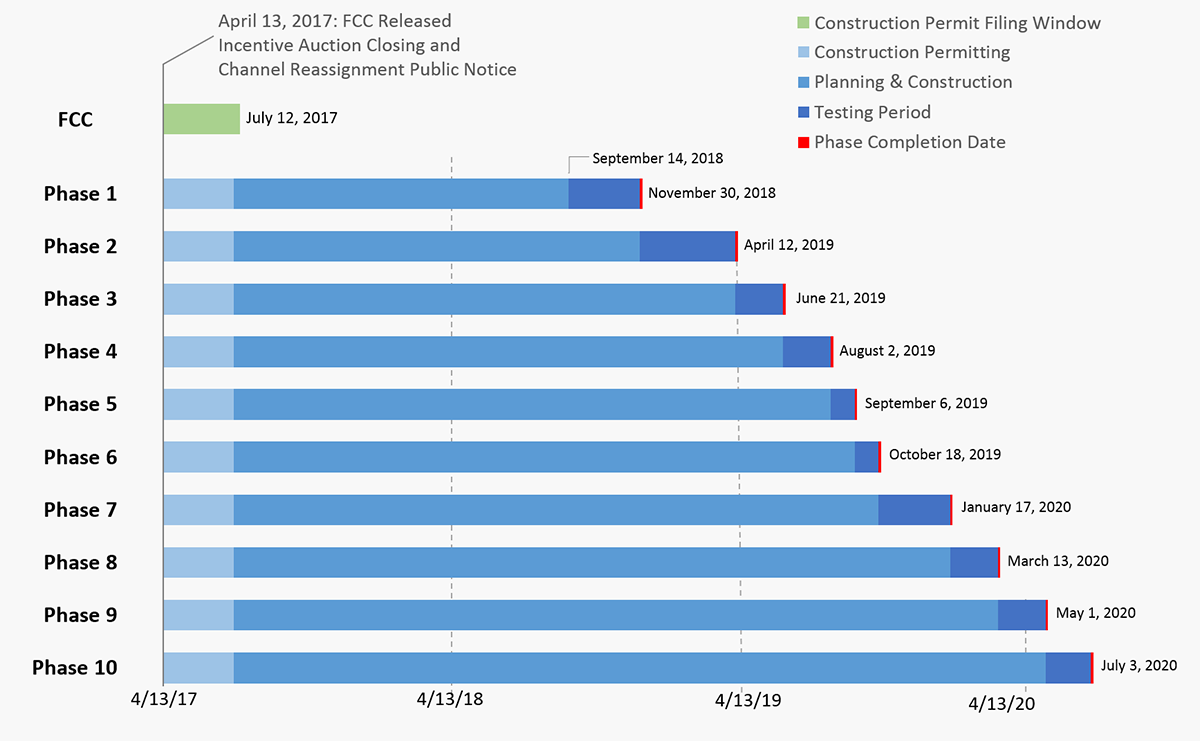It’s coming. About 1,000 channels nationwide are moving to new frequencies. If you get your local channels from cable, satellite, or streaming, it’s no problem. But what if you have an antenna?
What’s this all about?
Last year, the FCC finished up a multi-year process designed to clean up the broadcast frequencies used for TV. There is about 650MHz of prime spectrum used for TV and most of it doesn’t have anything on it. Blame early television broadcasters. The problem with TV in the 20th century is that it was very messy. You couldn’t have two channels next to each other because they would interfere with each other. So in addition to really wide “sidebands” where you couldn’t have anything, the whole TV station map was set up so that there wasn’t anywhere that broadcast frequencies overlapped, anywhere. This must have been a really big undertaking trying to figure out what when where.
Bottom line though, with old-school TV you needed about four times as many frequencies as you every had channels. What a waste.
With digital broadcasting, you don’t need these outdated restrictions. You can stack channels up right next to each other. That means instead of about 80 frequencies you need twenty or thirty. In most cities you’d really need only about seven, but you have to compensate for New York and Los Angeles, where there are a ton of little stations.
The FCC set to work reassigning all those stations, giving broadcasters money if they would agree to buy all new equipment designed for a different frequency. Before you cry “socialism!” the frequencies that are getting emptied out will be re-licensed to cell companies for 5G data. There’s a huge demand for this and trust me, this is not a money-loser for the US Government.
How will you be affected?
There’s a 10-step plan for moving channels from one frequency to another. Hopefully this includes crawls at the bottom of the screen to tell people to scan for channels, but even if it doesn’t, the details are all public, if you know where to look.
There’s an excellent resource out there to see what stations are moving, which ones are going away, and when you need to worry. It’s hosted by our friends over at Satellite Guys, but the actual address is at rabbitears.info.
Use that site to choose the market you’re interested in. Then look at the column that says “Ph.” That will tell you what phase you’re in. The phase is the date when the transition will be completed.
The FCC’s web site will help you get an idea of what phase happens when, but here is the same information so you don’t have to go over there:

| Phase | Testing Period Start Date |
Phase Completion Date |
|---|---|---|
| 1 | 9/14/2018 | 11/30/2018 |
| 2 | 12/1/2018 | 4/12/2019 |
| 3 | 4/13/2019 | 6/21/2019 |
| 4 | 6/22/2019 | 8/2/2019 |
| 5 | 8/3/2019 | 9/6/2019 |
| 6 | 9/7/2019 | 10/18/2019 |
| 7 | 10/19/2019 | 1/17/2020 |
| 8 | 1/18/2020 | 3/13/2020 |
| 9 | 3/14/2020 | 5/1/2020 |
| 10 | 5/2/2020 | 7/3/2020 |
How to scan for channels
Unfortunately every TV is different when it comes to scanning for channels. It starts by pressing the MENU button on your TV’s remote and then you have to look for an option for Off-Air setup or Antenna Setup. Scanning for channels takes about 10-20 minutes and you can start it and walk away.





